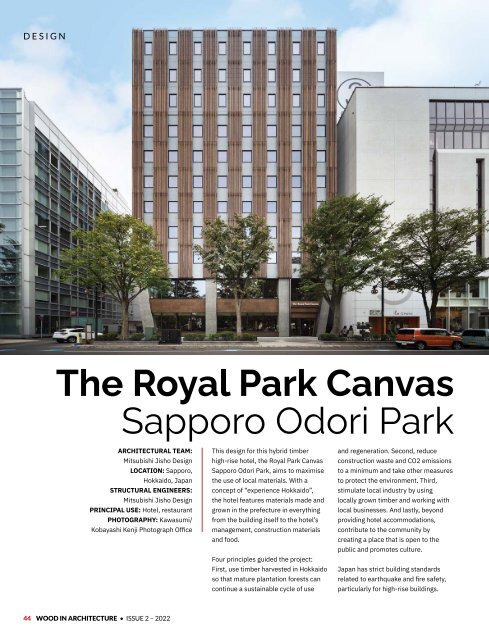Wood In Architecture Issue 2, 2022
First published in 2017, Wood in Architecture (WIA) is a bi-annual trade magazine devoted to the international timber construction sector. The newest addition to the Panels & Furniture Group of wood magazines, WIA features in-depth insights to the latest industry news, incredible projects and leading trade events. WIA is an advocate for timber as a material of choice for today’s built environment, and is the perfect source of inspiration for architects, builders, engineers and interior designers across the globe.
First published in 2017, Wood in Architecture (WIA) is a bi-annual trade magazine devoted to the international timber construction sector. The newest addition to the Panels & Furniture Group of wood magazines, WIA features in-depth insights to the latest industry news, incredible projects and leading trade events. WIA is an advocate for timber as a material of choice for today’s built environment, and is the perfect source of inspiration for architects, builders, engineers and interior designers across the globe.
You also want an ePaper? Increase the reach of your titles
YUMPU automatically turns print PDFs into web optimized ePapers that Google loves.
DESIGN<br />
The Royal Park Canvas<br />
Sapporo Odori Park<br />
ARCHITECTURAL TEAM:<br />
Mitsubishi Jisho Design<br />
LOCATION: Sapporo,<br />
Hokkaido, Japan<br />
STRUCTURAL ENGINEERS:<br />
Mitsubishi Jisho Design<br />
PRINCIPAL USE: Hotel, restaurant<br />
PHOTOGRAPHY: Kawasumi/<br />
Kobayashi Kenji Photograph Office<br />
This design for this hybrid timber<br />
high-rise hotel, the Royal Park Canvas<br />
Sapporo Odori Park, aims to maximise<br />
the use of local materials. With a<br />
concept of “experience Hokkaido”,<br />
the hotel features materials made and<br />
grown in the prefecture in everything<br />
from the building itself to the hotel’s<br />
management, construction materials<br />
and food.<br />
Four principles guided the project:<br />
First, use timber harvested in Hokkaido<br />
so that mature plantation forests can<br />
continue a sustainable cycle of use<br />
and regeneration. Second, reduce<br />
construction waste and CO2 emissions<br />
to a minimum and take other measures<br />
to protect the environment. Third,<br />
stimulate local industry by using<br />
locally grown timber and working with<br />
local businesses. And lastly, beyond<br />
providing hotel accommodations,<br />
contribute to the community by<br />
creating a place that is open to the<br />
public and promotes culture.<br />
Japan has strict building standards<br />
related to earthquake and fire safety,<br />
particularly for high-rise buildings.<br />
44 WOOD IN ARCHITECTURE • ISSUE 2 – <strong>2022</strong>


















